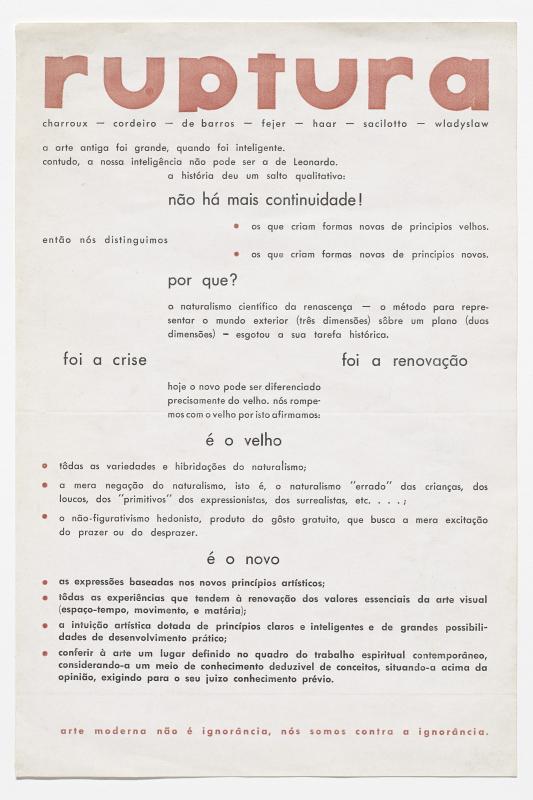In this text, art critic, professor, and journalist Lourival Gomes Machado (1917-1967) radically revises the position he formulated in “No silêncio das paixões” [In the Silence of Passions], published in issue 79 of the literary supplement to the newspaper O Estado de S. Paulo (São Paulo, May 3, 1958). In that earlier text, Gomes Machado criticizes the group of Concrete painters that emerged with the Manifiesto Ruptura (1952) for having formulated an objectification of art, for engaging industry, and for a doctrinaire attitude (see ICAA digital archive “Manifesto do grupo rupture,” doc. no. 771349). In this later text, which was written after a visit to the show of Concrete art held at the Galeria de Arte das Folhas in São Paulo, Gomes Machado affirms that criticism should not be subject to personal preferences and that all tendencies should be treated in the same fashion.
Later texts by Gomes Machado, such as “Adesões, manifestos e etc,” published in issue 126 of the literary supplement to the newspaper O Estado de S. Paulo (São Paulo, April 11, 1959) and “Resposta sobre resposta,” published in issue 135 of that supplement (São Paulo, June 13, 1959), address the debates between Concrete and Neo-Concrete artists. In them, the author clarifies that he does not adhere to either position.
In 1941, journalist, critic, and art historian Lourival Gomes Machado—along with intellectuals of the stature of Antonio Candido, Paulo Emílio Salles Gomes, and Décio de Almeida Prado—launched the São Paulo-based magazine Clima. The aim of the publication was to encourage innovation in the spheres of literary criticism, film, and theater in Brazil. During the forties, Gomes Machado was an art critic for the newspaper Folha da Manhã and the editor of the international section of O Estado de S, Paulo. After the resignation of Belgian curator Léon Degand, Gomes Machado became the director of the Museu de Arte Moderna de São Paulo (MAM/SP), a post he held from 1949 to 1951; he was also the chief curator of the first and fifth editions of the São Paulo Biennial. His most well known text is Barroco Mineiro (1969), a selection of articles on the baroque from the state of Minas Gerais, a topic that Gomes Machado began investigating in 1953 in his Teorias do Barroco.

